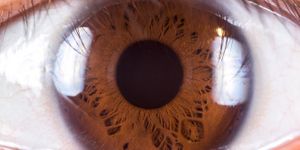Microrobots can wipe out dental plaque
An interdisciplinary research team have developed microscopic robotic cleaning crew that can precisely and non-invasively remove plaque buildup. The robotic system has two types of functions: one that works on the surfaces of teeth and the other to operate inside confined spaces.
With a precise, controlled movement, microrobots cleared a glass plate of a biofilm, as shown in this time-lapse image. Credit: Geelsu Hwang and Edward Steager/University of Pennsylvania
The robots that were developed with catalytic activity could eradicate the biofilms—amalgamations of bacteria enmeshed in a protective scaffolding. Biofilms can arise on many biological surfaces, such as the surface of teeth, and are notoriously difficult to remove because the sticky matrix that keeps the bacteria together protects it from antimicrobial activity.
"This was a truly synergistic and multidisciplinary interaction," says Hyun (Michel) Koo of the School of Dental Medicine and lead author of the study published in Science Robotics. "We're leveraging the expertise of microbiologists and clinician-scientists as well as engineers to design the best microbial eradication system possible. This is important to other biomedical fields facing drug-resistant biofilms as we approach a post-antibiotic era."
The robotic system capable of removing biofilms could potentially reduce the risk of tooth decay, endodontic infections, and implant contamination. The development can also combat the time-consuming process of plaque removal at a regular dental visit.
"Treating biofilms that occur on teeth requires a great deal of manual labor, both on the part of the consumer and the professional," says Edward Steager of the School of Engineering and Applied Science who is also lead author of the study. "We hope to improve treatment options as well as reduce the difficulty of care."
Learn more about dental biofilms:
"Existing treatments for biofilms are ineffective because they are incapabale of simultaneously degrading the protective matrix, killing the embedded bacteria, and physically removing the biodegraded products," says Koo. "These robots can do all three at once very effectively, leaving no trace of biofilm whatsoever."
Source: UPenn









